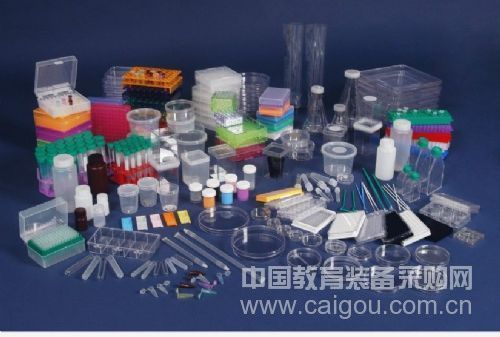1. Spot-ELISA
Dot-ELISA (dot-ELISA) features: ①take nitrocellulose membrane with strong protein adsorption capacity as a solid-phase carrier; ② the substrate forms a colored precipitate after enzyme reaction, and dyes the solid-phase membrane. In the laboratory, spot-ELISA can be performed as follows. On the nitrocellulose membrane, draw a small grid of 4 mm × 4 mm with a pencil, add 1 to 2 μl of antigen at the center of each grid to become a small dot. After drying, cut each cell and put it into the well of ELISA plate separately, operate according to ELISA method, and finally add a substrate that can form an insoluble colored precipitate. If stain spots appear on the membrane, it is a positive reaction. Due to the strong adsorption of nitrocellulose membrane, it is generally necessary to close it after coating. If the nitrocellulose membrane is cut into membrane strips, and multiple antigens are spotted on the same membrane strip, and the entire membrane strip is reacted with the same serum, the diagnosis results of multiple diseases can be obtained simultaneously. The disadvantage of spot-ELISA is the troublesome operation, especially the washing operation is very inconvenient.
Using the principle of spot-ELISA, various reagents have been prepared through special processes for clinical testing. Generally divided into three types: â‘ paste the reagent film on the plastic strip for easy washing and observation. â‘¡ The reagent membrane is sealed in a small box, a water absorbent is placed under the membrane, and the washing liquid is sucked into the cartridge through the membrane. This is the spot immunofiltration test (see Chapter 19). â‘¢ Fix the reagent membrane in the small bar frame and put it into a special automatic analyzer for detection. This system can be used for quantitative determination of various proteins, hormones, drugs and antibiotics.
2. Immunoblotting
Immunoblotting test (IBT) is also known as enzyme-linked immunoelectrotransfer blot (EITB). It is similar to Southernblot, a Southern blotting method established earlier by Southern for detection of nucleic acids. Stage. The first stage is SDS-polyacrylamide gel electrophoresis (SDS-PAGE). Protein samples such as antigens are negatively charged after being treated by SDS, and swim in the polyacrylamine gel from the cathode to the sun. The smaller the molecular weight, the faster the swimming speed. At this stage, the separation effect is not visible to the naked eye (the electrophoretic zone only appears after staining). The second stage is electric transfer. Transfer the strips that have been separated in the gel to the nitrocellulose membrane, select low voltage (100V) and large current (1 ~ 2A), and transfer with electricity for 45min. The protein bands separated in this stage are still invisible to the naked eye. The third stage is enzyme immunolocalization. After the protein-printed nitrocellulose membrane (equivalent to the antigen-coated solid phase carrier) is sequentially reacted with the specific antibody and the enzyme-labeled secondary antibody, an enzyme reaction substrate capable of forming insoluble colorants is added. Stain the zone. Commonly used HRP substrates are 3,3-diaminobenzidine (in brown) and 4-chloro-1-naphthol (in blue-violet). The band of positive reaction is clearly distinguishable, and the molecular weight of each component can be determined according to the molecular weight standard added by SDA-PAGE. This method combines the high resolution of SDS-PAGE with the high specificity and sensitivity of ELISA method. It is an effective analysis method. It is not only widely used in the analysis of antigen components and their immunological activities, but also for the diagnosis of diseases. This method is used as a diagnosis test in HIV infection. After the antigen is transferred onto the nitrocellulose membrane by electrophoresis, the membrane is cut into small strips, and the kit made with enzyme-labeled antibody and chromogenic substrate can be conveniently used for detection in the laboratory. According to the position where the colored line appears, it can be judged whether there is a specific antibody against the virus.
3. Recombinant immune binding test
Recombinant immunol binding assay (RIBA) is a method different from immunoblotting. The difference is that specific antigens are not separated and transferred by electrophoresis, but are directly added to the solid phase membrane in strips. RIBA has been used for the determination and analysis of serum anti-HCV antibodies. The composition of HCV antigens is complex, including specific non-structural region antigens, structural region antigens, core antigens and non-specific G antigens. Mixed antigen coating is generally used in ELISA, and the detected serum antibodies are comprehensive. RIBA adsorbs various antigen components on the membrane strips of nitrocellulose membrane in the form of horizontal lines, and puts them in a special long grooved reaction plate to incubate and wash with the specimen (primary antibody) and enzyme-labeled secondary antibody. After adding substrate for color development, the color band indicates the presence of specific antibodies against this adsorbed antigen in the serum. According to the thickness of the band and the color depth, the antibody titer can also be roughly estimated.
RIBA is very suitable for the analysis of pathogen antibodies containing complex antigen components. In addition to anti-HCV, it is also successfully used in the determination of anti-HIV resistance.

Water-Based Conditioner Spray
Key ingredients: tea polyphenols,
Polygonum multiflorum,
angelica, aloe and other extracts
Capacity: 100ml
t It is suitable for daily scalp
maintenance of dry hair, or it can
be used with platinum version or
noble version.
-HERBAL EXTRACT-
Water-Based Conditioner Spray
Hair Conditioner,Scalp Care Conditioner,Shampoo And Conditioner,Herbal Essence Conditioner
Shenzhen Sipimo Technology Co., Ltd , https://www.sipimotech.com